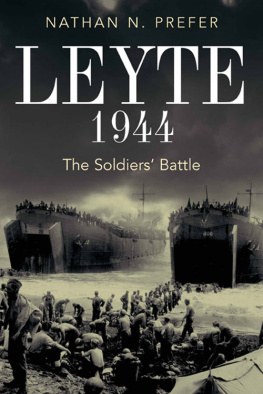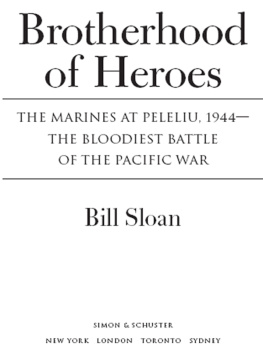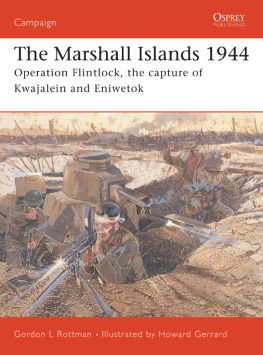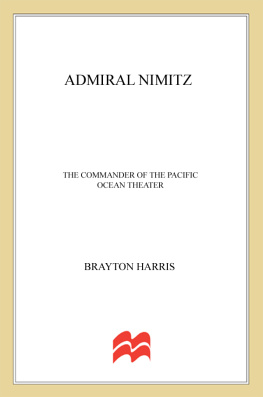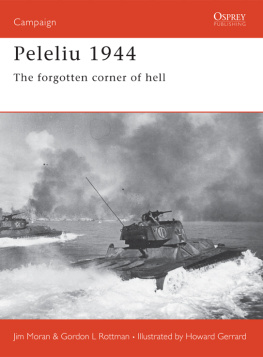Pagebreaks of the print version

IMAGES OF WAR BATTLE OF PELELIU 1944: THREE DAYS THAT TURNED INTO THREE MONTHS
RARE PHOTOGRAPHS FROM WARTIME ARCHIVES
IMAGES OF WAR BATTLE OF PELELIU 1944: THREE DAYS THAT TURNED INTO THREE MONTHS
RARE PHOTOGRAPHS FROM WARTIME ARCHIVES
JIM MORAN
First published in Great Britain in 2022 by
FRONTLINE BOOKS
An imprint of Pen & Sword Books Ltd
Yorkshire Philadelphia
Copyright Jim Moran 2022
ISBN 978 1 52677 821 5
eISBN 978 1 52677 822 2
Mobi ISBN 978 1 52677 823 9
The right of Jim Moran to be identified as Author of this work has been asserted by him in accordance with the Copyright, Designs and Patents Act 1988.
A CIP catalogue record for this book is available from the British Library.
All rights reserved. No part of this book may be reproduced or transmitted in any form or by any means, electronic or mechanical including photocopying, recording or by any information storage and retrieval system, without permission from the Publisher in writing.
Pen & Sword Books Limited incorporates the imprints of Atlas, Archaeology, Aviation, Discovery, Family History, Fiction, History, Maritime, Military, Military Classics, Politics, Select, Transport, True Crime, Air World, Frontline Publishing, Leo Cooper, Remember When, Seaforth Publishing, The Praetorian Press, Wharncliffe Local History, Wharncliffe Transport, Wharncliffe True Crime and White Owl.
For a complete list of Pen & Sword titles please contact
PEN & SWORD BOOKS LIMITED
47 Church Street, Barnsley, South Yorkshire, S70 2AS, England
E-mail:
Website: www.pen-and-sword.co.uk
Or
PEN AND SWORD BOOKS
1950 Lawrence Rd, Havertown, PA 19083, USA
E-mail:
Website: www.penandswordbooks.com
Introduction
By 1944 Japan was well and truly on the defensive. In Burma, their offensive towards Imphal and Kohima had failed and by July British and Commonwealth troops were pushing them back into Central Burma. On all fronts the Japanese were being pushed back serious thought had to be given to future defence.
The result of these deep deliberations was what would become known as the Absolute National Defence Sphere, a line drawn in the sand to be held at all costs. Part of the Defence Sphere was the defence of the Palau Islands and, in 1944, after meetings and consultation, Premier Tojo summoned Lt General Inoue, whose 14th Infantry Division had been transferred from mainland China to Saipan but was now to be diverted to the Palau Islands. There General Inoue was to prepare defences and ready himself for the anticipated allied invasion force.
Pre-war Koror, Palau Islands mandated to the Japanese following the defeat of Germany in WW1 (the Palaus were a German protectorate before WW1)
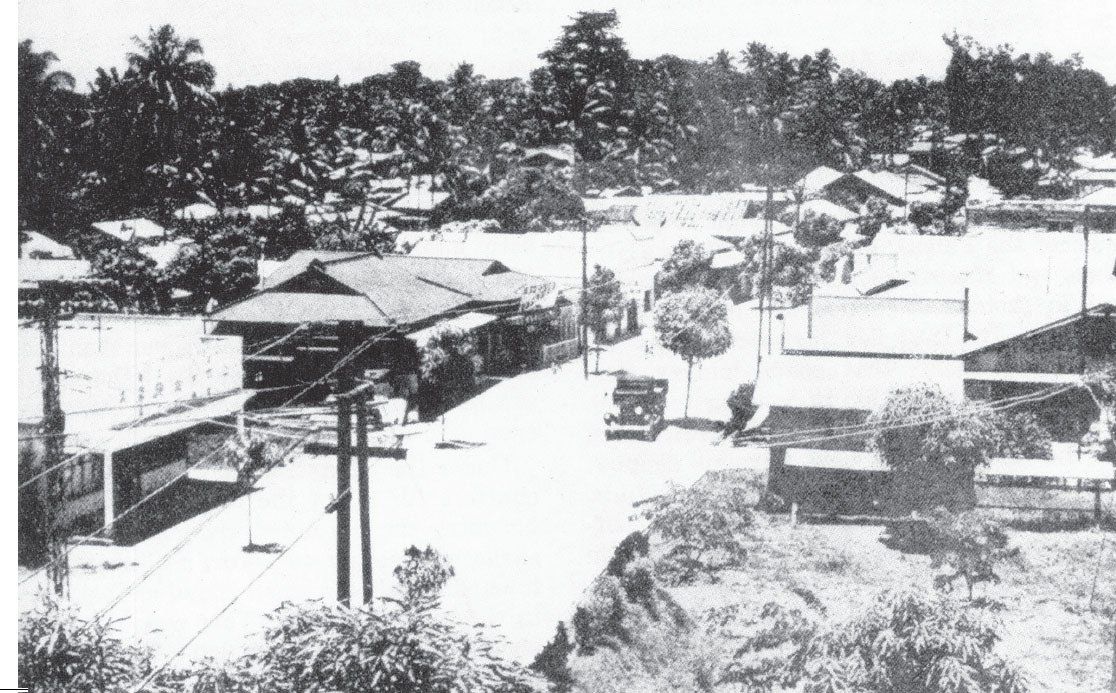
The Palau Islands had first been seized by the Japanese after declaring war on Germany in August of 1914, with Admiral Tatsuo Matsumara landing on Koror in October of that year. Despite American opposition, the League of Nations awarded mandate of the islands to Japan in 1920. During the intervening years between WW1 and the outbreak of WW2, Japan established a major presence on the Palaus, centred on Koror, with a civil government and major Japanese commercial activity. But following the outbreak of hostilities in December 1941 the Palau islands took on a more important role, in the first instance as a forward supply base and training area for the Japanese conquests of 1941 and 1942, but now they were to form part of the front line of the defence of the homeland.
Before the arrival of General Inoue and his forces, the Palau Islands were defended by troops under the command of Major General Yamaguchi, whose troops would now bolster Inoues forces in defence of the Palaus.
Following detailed surveys, the Japanese assumed correctly that the Allies would probably assault from the south with landings on Peleliu for its airstrip and Angaur, then making their way up the Palau chain heading for Koror and Babelthuap. In reality though this would become unnecessary to the Allies who were able to neutralise the Japanese forces on these islands with their air and naval supremacy.
In the Central Pacific, General Douglas MacArthurs forces had, since 1942, worked their way up from Guadalcanal through the Solomons chain of New Georgia, Bougainville, New Britain and Cape Gloucester and across New Guinea. In the early days of 1942 General MacArthur was ordered to leave the Philippines by President Roosevelt, giving his promise to the Philippine people of I shall return: he was now ready to fulfil that promise. In the Northern Pacific, Admiral Nimitzs forces had a successful island hopping campaign from Tarawa in the Gilbert Islands to Guam, Saipan and Tinian in the Marianas, and now had their sights firmly set on Iwo Jima, Okinawa and ultimately the Japanese homeland. Successful carrier-based air strikes on the Japanese naval bases at Truk in the Caroline Islands and Rabaul in the Solomons had neutralised them sufficiently for them to wither on the vine and they were no longer a barrier to progress. MacArthur was determined to return to the Philippines as early as possible and in July of 1944 met with President Roosevelt and Admiral Nimitz in Honolulu, arguing with them that failure to fulfil his pledge to return as soon as possible would have not only an adverse effect on the Philippines, but would also diminish Americas prestige amongst friends and allies in the Far East. MacArthurs skill in persuasion was such that he even won over Admiral Nimitz, to the extent of once again securing the loan of the 1st Marine Division as he had previously done for the re-taking of the Solomon Islands. MacArthur always referred to the 1st Marine Division as My Marines.
Phosphate loading pier, Angaur.
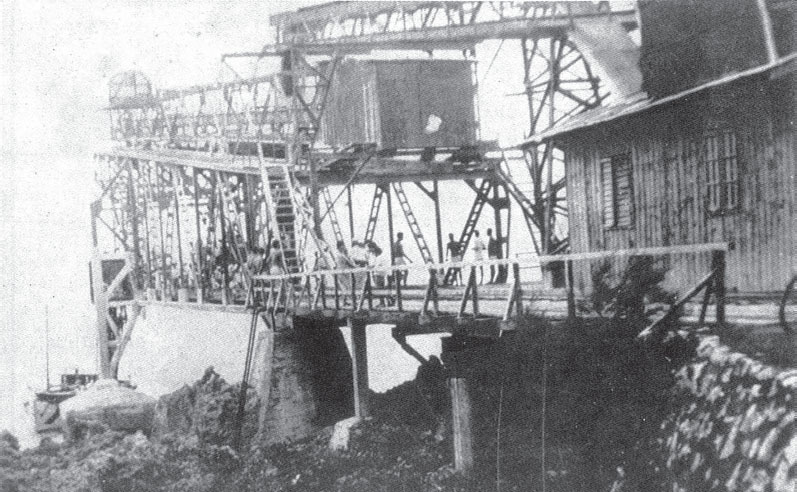

The Palau Islands. Peleliu and Angaur islands are at the southernmost tip of the island group
Admiral Nimitz had already issued a warning order for invasion of the Palau Islands group, applying the codename of Operation Stalemate.
Chapter One
Opposing Plans, American and Japanese
Initially the plan was for MacArthur to push northwards from New Guinea to Morotai, then on to the Philippines. When the Philippines were safely back in the hands of the US the decision could be taken as to whether an assault could be made on the Japanese mainland via Formosa and China favoured by MacArthur or from Okinawa and the Ryukyu Islands favoured by Nimitz. On September 15 1944, the same day that MacArthurs troops landed on Morotai, the 1st Marine Division, supported by the Armys 81st Wildcat Division, were to make landings on the southern Palau islands of Angaur and Peleliu, part of Operation Stalemate II, this being the revised plan for the assault on the Palau Islands.
As Commander of the Western Pacific Task Force, Admiral Bill Halsey was in overall charge of supporting operations. Whilst the invasion force was ploughing onward towards the Palaus he carried out air strikes from carrier-based planes on the southern and central Philippines and the Palau Islands as part of the pre-invasion preparation.





